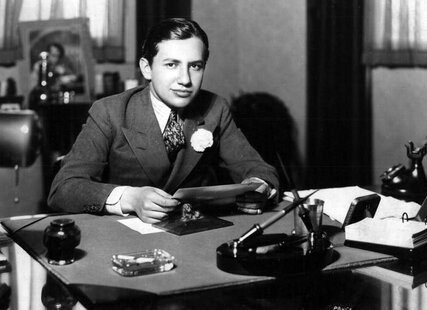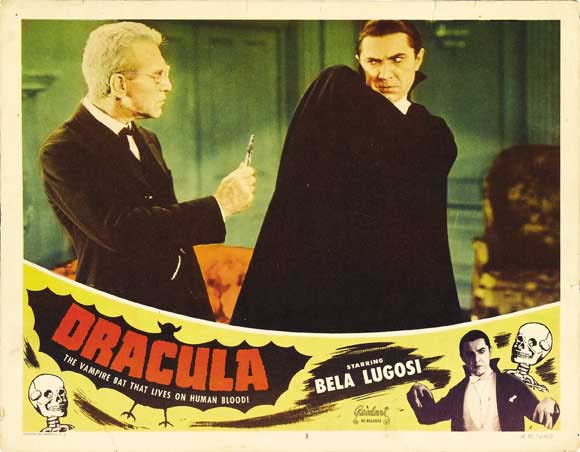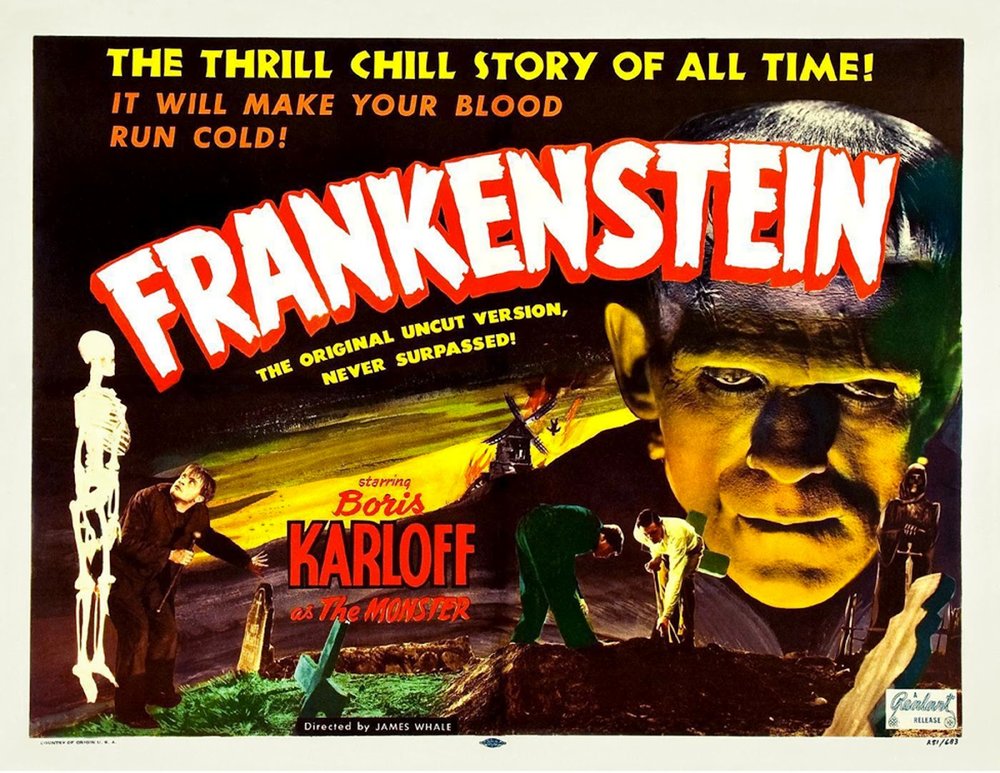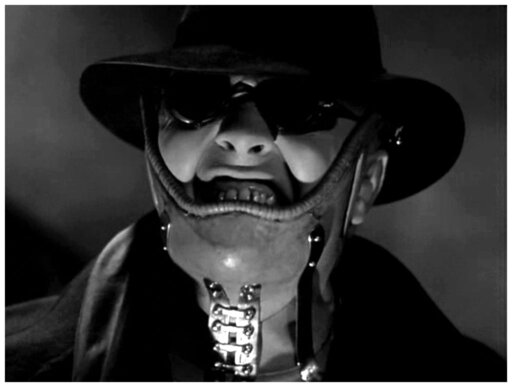On This Page
Horror Begins To Talk — And Scream
Horror movies were reborn in the 1930s. Sound revolutionized cinema across the board and had a huge impact on the horror genre— and not just in the form of dialogue. Sound effects added an extra dimension to terror, from creaking doors to echoing footsteps to the rumbling of castle thunder. Music cues built suspense or signaled the presence of a threat. As screen storytelling moved away from symbolism towards realism, the dreamlike wraiths of silent cinema were replaced by monsters that grunted, groaned and howled.
The horror films of the 1930s tended to be exotic fairy tales, invariably set in some far-off land peopled by characters in period costume speaking in strange accents. Producers continued with the practice of looking backward for inspiration, drawing upon the literary classics of the 19th century for their source material. These fantastical and supernatural elements also offered some much-needed escapism to audiences tiring of their Great Depression reality: horror movies, despite some costly special effects, generated serious coin at the box office.
This was also despite the initial struggle that many of the major players — such as director Tod Browning — had to adapt to the new medium. Making talking pictures was a very different process to producing silent movies and, watching today, some of the first efforts seem somewhat creaky. Even though the new talking pictures prided themselves on realism, audiences flocked into cinemas to be scared by largely supernatural monsters wreaking havoc on largely fantastical worlds, events far removed from the everyday realities of the Great Depression and political turmoil in Europe and Asia. Horror, then as now, represented the best escapism available for those precious few cents it took to buy a ticket. And cinema was an American national obsession — 80 million people attended the cinema on a weekly basis in 1930, some 65% of the total US population.
Universal Monsters and Carl Laemmle Jr.
Universal forged its identity as a studio around horror pics in the early 1930s, largely thanks to the efforts of Carl Laemmle Jr., son of the studio’s redoubtable founder. “Junior” as he was known was given the job of head of production in 1928 at the tender age of 21. He was never going to be a visionary hustler on a par with his father and, indeed, many of his co-workers despised him (actress Mae Clarke called him “retarded”). However, he did demonstrate a certain gift for picking intellectual property and assigning talent to productions. He spent a lot of money on the right things (the horror cycle), but, unfortunately, his instincts were inconsistent. By 1936 he had bankrupted the studio by financing a series of wildly expensive flops.

Junior was on a roll in 1930-31, however, when he put together two Gothic horror adaptations, Dracula (released on Valentine’s Day 1931) and Frankenstein (released at Thanksgiving) that came to define the nascent horror genre. He hired seasoned director Tod Browning for Dracula — Browning had been making spook tales and lurid thrillers since the late 1910s and was known for his collaborations with Lon Chaney — and James Whale (an English expat who’d recently scored hits with wartime dramas All Quiet On The Western Front and Waterloo Bridge) for Frankenstein.
Junior also approved the casting of two lesser-known actors in the leading roles: Bela Lugosi and Boris Karloff, who brought Dracula and Frankenstein’s Monster respectively to the screen. Their personifications of these characters are still synonymous with 1930s horror.
Dracula (1931)

Bram Stoker’s 1897 novel, Dracula, has been plundered time and time again for movie adaptations of varying quality and now seems like a particularly hard-trampled piece of intellectual property. However, back when this version was released on Valentine’s Day 1931 it still seemed fresh, a story with originality and panache —and sex. It’s hard to believe now that in 1931 moviegoers were unfamiliar with vampires and the rules governing their undead existence. To the average moviegoer at this time, a ‘screen vamp’ was a sultry actress, an exotic siren like Theda Bara, Pola Negri, or Olga Baclanova. Dracula changed all that.
Read more about DRACULA >>>>>>
Frankenstein (1931)

The lumbering, square-headed, bolt-necked figure of the Monster is now ingrained in popular imagination as ‘Frankenstein’. However, the Monster doesn’t have any lines and the story focuses on the arc of his creator, Dr. Henry Frankenstein, played by Colin Clive. Studio execs thought Boris Karloff’s performance was so peripheral to the movie that they did not even invite him to the premiere, yet his characterization of the Monster as both threatening and pitiful has stood the test of time as the symbol of classic Universal horror.
Read more about FRANKENSTEIN >>>>>>>
Once these men had proved their mettle, Junior kept them steadily at work on the Universal lot churning out more horror-themed movies. This was the studio system production line at its finest, with individual productions benefiting from the Universal storehouse of materials, ideas and expertise. Large-scale sets could be recycled from one movie to the next, and there were teams of experts available in every department, most notably makeup, headed by Jack Pierce.
Junior also kept above-the-line talent busy. Karloff and Whale followed Frankenstein with The Old Dark House (1932) and The Bride of Frankenstein (1935). In between, Whale directed Claude Rains in The Invisible Man (1933) while Karloff depicted another lumbering creature in The Mummy (1932) and a Hungarian Satanist in The Black Cat (1934). Lugosi was busy too, appearing alongside Karloff in The Black Cat after The Murders In The Rue Morgue (1932). Tod Browning alone failed to profit from the monster movie mash-up — he made Freaks for MGM, which single-handedly destroyed his career.
The runaway success of Dracula, Frankenstein and the followups made on Junior’s watch between 1932-36 generated a series of movies that continues to this day, as Universal Studios continues to exploit the popularity of these iconic monsters with its plans for the Dark Universe. However, the glory days didn’t last long. Univeral’s B-movie successes couldn’t compensate for their heavy losses on A-list pics and in 1936 the studio had to be sold off to pay its debts. Junior — and his monsters — fell out of favor with the new regime.
- The High Times and Hard Fall of Carl Laemmle Jr. by Farran Smith Nehme
Mad Scientists
Dr. Frankenstein wasn’t the only man trying to defy God and Nature: mad scientists pop up frequently in this decade’s horror films. This reflected the ongoing cultural fascination with eugenics, the idea that the only way to prevent a future catastrophe for the human race was by selective breeding of the genetically superior and the forced sterilization of those with undesirable genetic traits.
The Nazis weren’t the only ones who agreed with this thinking. Many prominent citizens, from leaders at the Carnegie Institution and the WK Kellogg Foundation to President Roosevelt himself, put time, money and energy into the eugenics cause. At the same time, the U.S. Public Health Service felt there was nothing wrong in conducting the now-infamous Tuskegee syphilis experiment (which ran from 1932-1972) on 399 unsuspecting black Americans — 128 died, 40 wives were infected and 19 children born with congenital syphilis.
Perhaps there was a reason Hollywood — peopled with immigrants, mavericks, and outsiders rather than Rockefeller-approved bluebloods — was drawn to stories that warned of the consequences of science and scientists run amok? Frankenstein led the charge, tapping into the same fear of human experiments as Caligari and Orlac in the early 1920s. The new generation of mad scientists included Dr Moreau (Charles Laughton in The Island of Lost Souls – 1933), Dr Griffin (Claude Rains in The Invisible Man -1933), Paul Lavond (Lionel Barrymore in The Devil Doll 1936), Dr Mirakle (Bela Lugosi in Murders in the Rue Morgue – 1932), the wheelchair-bound Ivan Igor (Lionel Atwell in The Mystery of the Wax Museum– 1933), and not forgetting Peter Lorre’s crazed turn as a lovesick surgeon in Mad Love (1935).

1933, the year Hitler came to power, saw a peak in mad scientist movies; it seems the genre was horribly prescient of the scientific insanity to come in the Nazi-run concentration camps.
The Golden Era of Horror?
It’s startling to consider how many classic horror films were made between 1930 and 1934, presenting weird and wonderful monsters and monstrous humans whose struggles still resonate with audiences today. The first half of the 1930s is, quite rightly, known as the golden age of horror, with A-list talent attracted to superbly crafted pictures that frequently connected with huge audiences. Universal weren’t the only players in town — RKO had a couple of smash hits with the concurrently-filmed King Kong (1933) and The Most Dangerous Game (1932) and Fredric March won the 1931 Best Actor Oscar for Paramount’s Dr. Jekyll and Mr. Hyde.
Filmmakers of the time were drawn to the Genre That Didn’t Have A Name Yet because of the opportunities these dark tales offered to break taboos, exploring the lurid and sensational as well as probing deep into the sexual and criminal elements of the human psyche. The characters in these movies lived in out-of-the-way and out-of-time-places, outside the usual boundaries set by moral conventions or even the laws of physics. On screen, they had the freedom to run amok, flirt (even with the same sex), consume all manner of illicit potions, use violence to get their way, kill and — most blasphemously — create new life. It was inevitable someone would come along to spoil the fun.
The Production Code
Throughout the 1920s, Hollywood both in front of and behind the screen was fuelled by a series of salacious scandals: adultery, drugs, alcohol, murder, rape, homosexuality — you name it. Audiences lapped up the gossip about stars as eagerly as they consumed saucy silent movies featuring nearly-nude actors, debauched love triangles, and heinous crimes, for which the perpetrators weren’t always punished. The moral guardians of the nation — led by the Catholic Church — were outraged, firstly that this level of decadence was considered entertainment, and secondly that it was so freely available to the masses.
Then, as now, a moral panic bubbled about the connection between the depravity shown onscreen and what audiences thought, said and did after they left the theater. There was no consistently applied form of censorship: censors at a city and state level could request cuts on a by film basis, but that didn’t stop the unedited print being shown elsewhere, often marketed with a “Banned in ______” tagline. The nation’s moral arbiters agreed that something should be done.

The studios resisted the idea of government censorship, preferring to go down the path of voluntary self-regulation. Will Hays, former Postmaster General and savvy Republican politician, was invited to be President of the Motion Picture Producers and Distributors of America from its inception in 1922. This organization was founded in the wake of the Fatty Arbuckle/Virginia Rappe scandal when it became obvious Hollywood needed to get its house in order. Hays was tasked with writing a ‘Production Code’, laying out the standards of decency to which all Hollywood producers would voluntarily adhere. It took a while, but by 1934, all studio-produced movies had to abide by the Code or risk a total ban.
Read More About Horror Film Censorship in the 1930s here>>>
The constraints imposed by the Code are generally believed to be responsible for the Golden Era of Hollywood in general: for the next thirty or so years Hollywood was forced to find ever more inventive, subtle and symbolic ways of telling stories, of depicting the dark side of human nature through shadow and allusion, and of hinting at extra-marital sex, drug use and violent death in terms of metaphors that went flying over the heads of any children in the theatre. Lovers had to be married, criminals had to pay for their crimes, and revenge was a dish never eaten, hot or cold.
Romance, melodrama, thriller, war and the nascent genre of film noir all thrived under the Code but horror waned in status as audience expectations shrank. The weird or off-kilter was no longer welcome and the very reasons people had for enjoying horror movies now became reasons to ban them. Post-Code horror movies (like The Werewolf Of London) tended to be guarded, conventional affairs, with none of the inventiveness or arch humor of their predecessors. The Code specifically prohibited the depiction of anything that could be deemed perverse, and any kind of mocking of religion (or religious people or beliefs) or blasphemy was out too, as was nudity. Having got off to such a great start, horror stories (and the filmmakers who were drawn to them) were rapidly relegated to B-productions, made on a shoestring budget if at all. It would be decades before the genre regained the respect and enthusiasm horror movies garnered in these golden years.
Key Horror Movies of the 1930s
- Dracula (1931)
- Frankenstein (1931)
- The Mummy (1932)
- Freaks (1932)
- King Kong (1933)
- Bride of Frankenstein (1935)
- The Werewolf of London (1935)
- Mad Love (1935)
Further Reading
- The Turn to Gruesomeness in American Horror Films, 1931-36 — Jon Towlson (McFarland, 2016)
- Screams of Reason: Mad Science and Modern Culture — David J. Skal (W.W. Norton & Co, 1998)
- Queer Horror: Decoding Universal’s Monsters – Bright Lights Film Journal
- The Devil’s Advocate: Will Hays and the Campaign to Make Movies Respectable — Stephen Vaughn in the Indiana Magazine of History Volume 101, Issue 2, pp 125-152